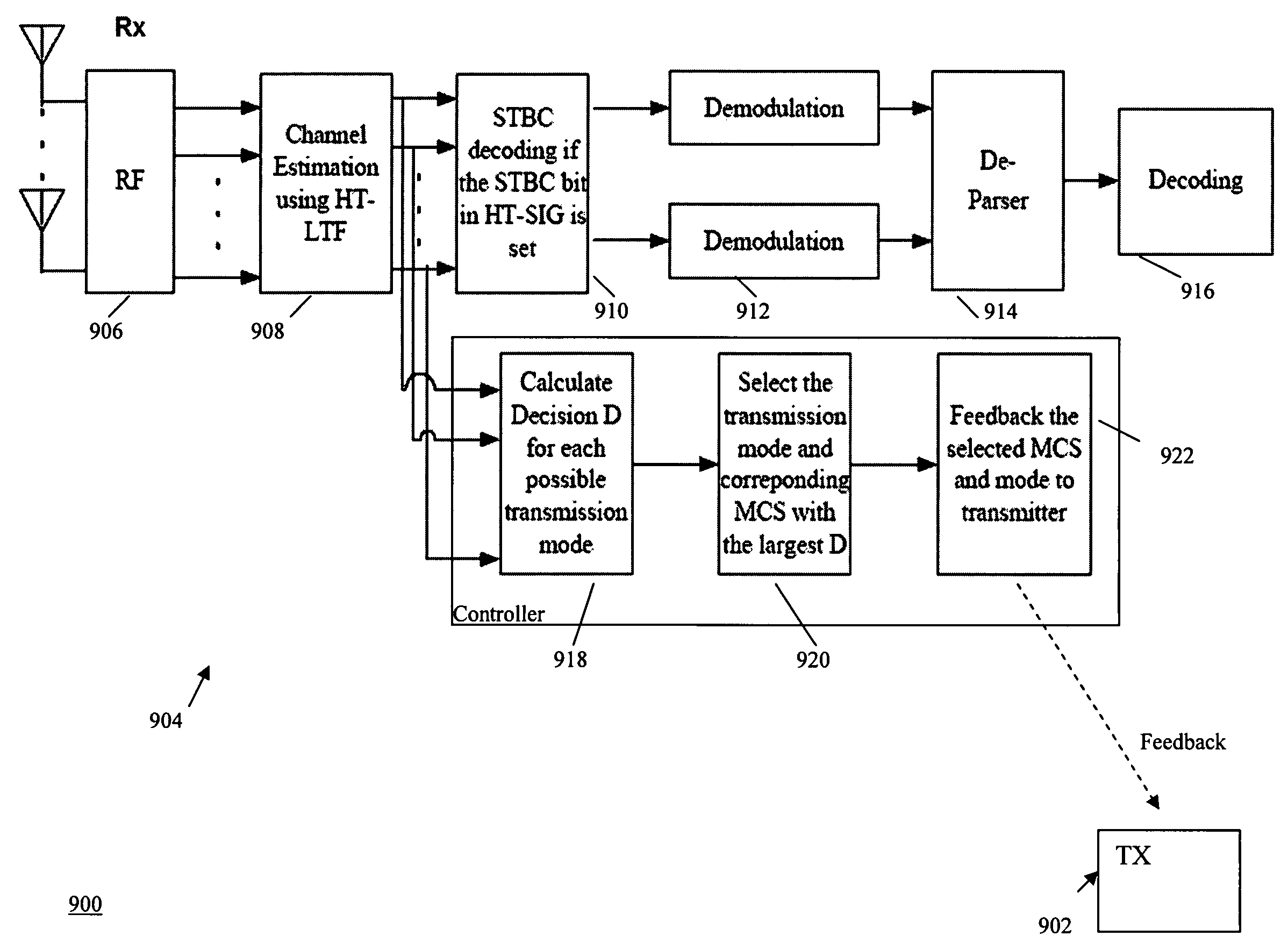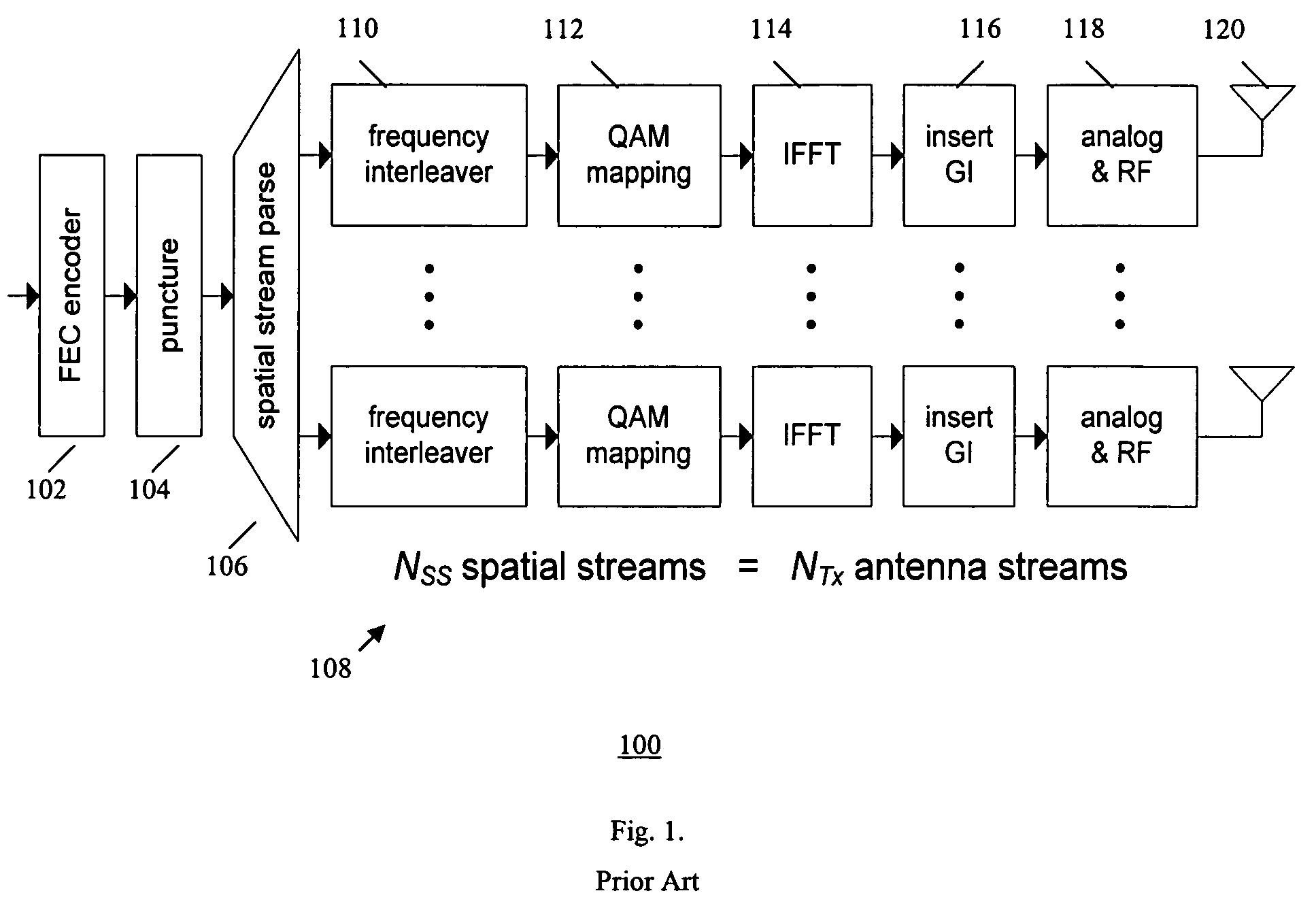Method of switching transmission modes in IEEE 802.11n MIMO communication systems
a communication system and transmission mode technology, applied in data switching networks, instruments, frequency-division multiplexes, etc., can solve the problem of not providing detailed workable algorithms in conventional systems, and achieve the effect of improving system performance and best performan
- Summary
- Abstract
- Description
- Claims
- Application Information
AI Technical Summary
Benefits of technology
Problems solved by technology
Method used
Image
Examples
examples
[0055]In the following, two selection examples are provided. First example is switching between MCS 3 and MCS 9. As shown in FIGS. 4-5, for a 2×2 (i.e., 2 transmit antennas and 2 receive antennas) system, spatial spreading is preferred (MCS 3), and for a 2×3 system, spatial multiplexing is preferred (MCS 9). Spatial multiplexing refers to the direct mapping mode. The ensemble average of decision metric D is calculated over channel DNLOS and ENLOS, averaging over 500 independent channel realizations. The results are shown in Tables IV and V below.
[0056]
TABLE IVDecision metric D for 2 × 2 system with MCS 3 and MCS9DNLOS channelENLOS channelMCS 9MCS 3MCS 9MCS 3(Spatial(SpatialMCS 3(Spatial(SpatialMCS 3Multiplexing)Spreading)(STBC)Multiplexing)Spreading)(STBC)d2min-constellation3.01(dB)−3.98(dB)−3.98(dB)3.01(dB)−3.98(dB)−3.98(dB)ρcoding0(dB)0(dB)0(dB)0(dB)0(dB)0(dB)ρMIMO−5.91(dB)3.84(dB)5.70(dB)−7.04(dB)1.93(dB)5.83(dB)D−2.90−0.131.72−4.04−2.041.85
[0057]
TABLE VDecision metric D for 2 × ...
PUM
 Login to View More
Login to View More Abstract
Description
Claims
Application Information
 Login to View More
Login to View More - R&D
- Intellectual Property
- Life Sciences
- Materials
- Tech Scout
- Unparalleled Data Quality
- Higher Quality Content
- 60% Fewer Hallucinations
Browse by: Latest US Patents, China's latest patents, Technical Efficacy Thesaurus, Application Domain, Technology Topic, Popular Technical Reports.
© 2025 PatSnap. All rights reserved.Legal|Privacy policy|Modern Slavery Act Transparency Statement|Sitemap|About US| Contact US: help@patsnap.com



